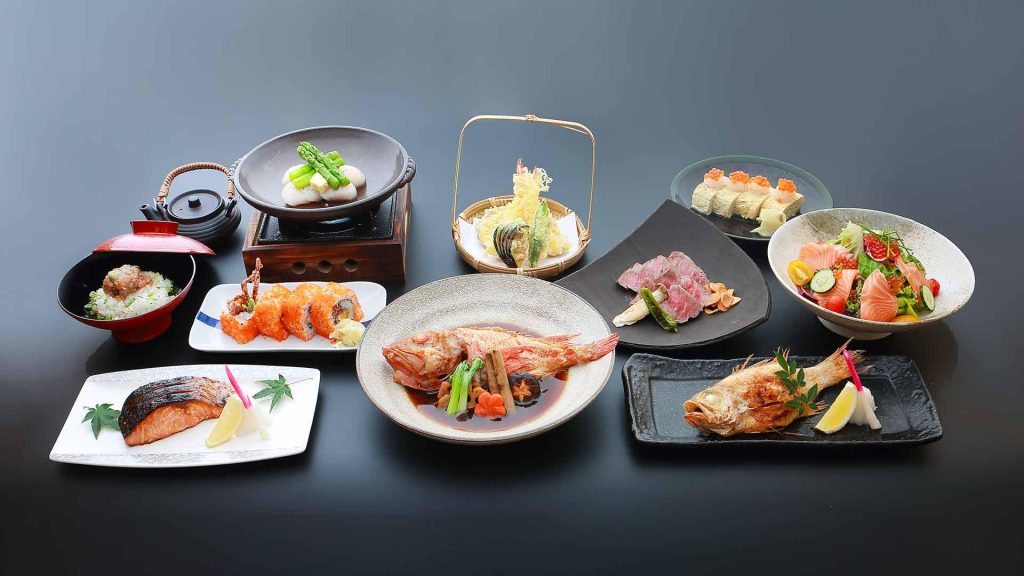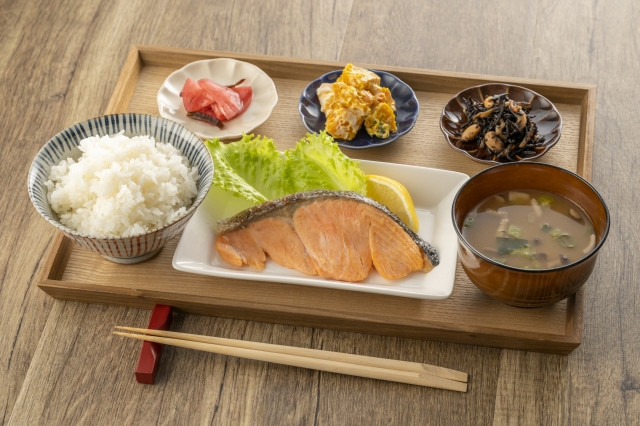Japan is renowned worldwide for its rich culinary traditions, offering a variety of dishes that not only taste amazing but also reflect the country’s culture, history, and meticulous attention to detail. From the bustling streets of Tokyo to the serene temples of Kyoto, Japan’s culinary landscape is as diverse as its landscapes. If you’re planning a trip to Japan, indulging in its traditional food is a must-do experience.
But with so many choices, what should you eat? In this article, we’ll guide you through the most iconic traditional Japanese dishes you absolutely must try during your visit. These dishes showcase the essence of Japanese cooking—simplicity, seasonality, and an unwavering commitment to quality ingredients.
1. Sushi: The Icon of Japanese Cuisine
No trip to Japan would be complete without sampling sushi—arguably the most famous Japanese dish worldwide. Sushi consists of vinegared rice paired with a variety of ingredients, most commonly fish, seafood, or vegetables. There are different types of sushi, and each offers a unique dining experience.
Types of Sushi to Try:
- Nigiri: A small mound of vinegared rice topped with a slice of raw fish or other seafood, such as tuna (maguro), salmon (sake), or shrimp (ebi).
- Sashimi: Thinly sliced raw fish served without rice, often accompanied by soy sauce and wasabi.
- Maki: Sushi rolls made with rice and fillings wrapped in nori (seaweed). You’ll find various types, including rolls filled with fresh fish, avocado, and cucumber.
- Temaki: Hand rolls made by rolling nori into a cone shape and filling it with sushi rice, fish, and vegetables.
When in Japan, head to a traditional sushi bar or edomae sushi restaurant (a style of sushi originating from Edo, now Tokyo) for the freshest, highest-quality sushi. Sushi is often served with a side of pickled ginger (gari) to cleanse your palate and wasabi for an extra punch of heat.
2. Ramen: A Comforting Bowl of Noodles
Ramen has become one of the most beloved dishes in Japan and abroad, but the variations within Japan are endless. Ramen consists of wheat noodles served in a flavorful broth, usually made from either soy sauce, miso, salt, or pork bone (tonkotsu). Toppings often include slices of pork, boiled egg, green onions, seaweed, and bamboo shoots.
Regional Ramen Styles:
- Shoyu Ramen (soy sauce-based broth) from Tokyo, which is light yet flavorful.
- Miso Ramen from Hokkaido, known for its hearty, rich miso-based broth, perfect for cold weather.
- Tonkotsu Ramen from Fukuoka, made with a rich, creamy pork bone broth.
- Shio Ramen (salt-based broth) from Kyushu, typically lighter and clearer in taste.
To enjoy authentic ramen, head to a ramen-ya (ramen shop) or local izakayas that specialize in noodle dishes. It’s a great experience to see the ramen chef carefully prepare your bowl, offering a satisfying combination of flavors and textures.
3. Tempura: Lightly Fried Perfection
Tempura is a dish made by deep-frying seafood or vegetables in a light, crispy batter. It is often served with a dipping sauce called tentsuyu, made from soy sauce, dashi (a Japanese soup stock), and mirin. The batter is incredibly light, creating a contrast between the crispy exterior and tender interior of the fish, shrimp, or vegetables.
Popular ingredients for tempura include:
- Shrimp (ebi)
- White fish (kisu)
- Sweet potato (satsumaimo)
- Pumpkin (kabocha)
You’ll often find tempura served as part of a tempura donburi, where the tempura is placed over a bowl of rice, or in a tempura set alongside rice, soup, and pickles.
For the best tempura experience, consider visiting a tempura specialty restaurant where the tempura is freshly made to order, ensuring that it’s light and crispy.

4. Kaiseki: A Fine Dining Experience
If you want to experience the art of Japanese cuisine in its most refined form, look no further than kaiseki. This multi-course meal is the pinnacle of Japanese dining, featuring seasonal ingredients prepared and presented with an incredible attention to detail.
A typical kaiseki meal consists of several small courses, including appetizers, sashimi, grilled dishes, soups, and desserts. Each dish is carefully crafted to highlight the natural flavors of the ingredients, and the entire meal is meant to engage all the senses.
Kaiseki dining is often served in high-end restaurants, particularly in places like Kyoto, where traditional Japanese dining culture is highly valued. The meal is designed to reflect the seasons, so the ingredients will vary depending on when you visit.
5. Okonomiyaki: The Savory Pancake
Okonomiyaki is a savory pancake that is often described as a cross between a pancake and an omelet. Made with a batter of flour, eggs, shredded cabbage, and a variety of fillings (such as pork, shrimp, or beef), it is cooked on a griddle and served with okonomiyaki sauce (a thick, tangy sauce), bonito flakes, and a sprinkle of aonori (seaweed powder).
There are two main regional styles of okonomiyaki:
- Osaka-style: The ingredients are mixed into the batter before cooking, and the pancake is usually thicker.
- Hiroshima-style: The ingredients are layered rather than mixed, and the pancake often includes noodles (yakisoba) for an extra filling dish.
Okonomiyaki is often cooked right in front of you on a grill at okonomiyaki-ya (specialty restaurants), making it a fun and interactive meal. It’s a popular dish for both locals and tourists and is a must-try for anyone wanting to explore Japanese street food culture.
6. Sukiyaki: A Warm and Flavorful Hot Pot
Sukiyaki is a traditional Japanese hot pot dish made by simmering thinly sliced beef, tofu, vegetables, and noodles in a sweet-savory broth made from soy sauce, sugar, and mirin. It’s typically served with raw egg, which diners dip the cooked ingredients into before eating.
Sukiyaki is a popular dish for gatherings, and you’ll often see it being prepared in the middle of the table, where everyone can enjoy dipping and cooking their own ingredients. The dish is perfect for colder months and provides a rich, comforting meal that combines the umami of the broth with the sweetness of the beef.
While sukiyaki is often served in restaurants that specialize in hot pot, many high-end hotels and ryokan (traditional inns) offer sukiyaki as part of a seasonal meal.
7. Unagi: Grilled Eel
Unagi (grilled eel) is a beloved Japanese dish, especially during the hot summer months when it’s thought to help boost energy levels. The eel is grilled over charcoal and coated with a sweet, savory sauce made from soy sauce, sugar, and mirin. It’s usually served over a bowl of rice (known as unadon or unaju), with a side of pickled vegetables.
Eel is rich in nutrients and has a unique, smoky flavor due to the grilling process. It’s a dish that requires skill and care to prepare, and you’ll find some of the best unagi in specialty restaurants known for their expertise in grilling eel.
8. Japanese Sweets (Wagashi): A Taste of Tradition
For those with a sweet tooth, wagashi (traditional Japanese sweets) are a must-try. These sweets are often made with ingredients like sweet red bean paste (anko), mochi (glutinous rice), and chestnuts. The presentation is just as important as the taste, with wagashi often being crafted to reflect the seasons.
Popular types of wagashi include:
- Mochi: Chewy rice cakes filled with sweet red bean paste, often enjoyed with tea.
- Dorayaki: Two fluffy pancakes filled with sweet red bean paste.
- Anmitsu: A refreshing dessert made with agar jelly, fruit, sweet red bean paste, and syrup.
Wagashi is typically enjoyed with a cup of green tea, especially in traditional tea houses. It’s an essential part of the Japanese culinary experience, offering a taste of the country’s centuries-old traditions.
Conclusion: Embrace Japan’s Culinary Heritage
Japanese cuisine is an essential part of the country’s culture, and experiencing traditional dishes is one of the best ways to connect with the spirit of Japan. Whether you’re savoring a delicate sushi roll in Tokyo, enjoying a bowl of steaming ramen in Hokkaido, or indulging in the refined artistry of a kaiseki meal in Kyoto, each dish tells a story of the country’s rich culinary heritage.
During your travels in Japan, be sure to explore the many flavors, textures, and techniques that make Japanese food so special. Every bite you take brings you closer to understanding Japan’s culture and the immense pride its people take in their culinary traditions. So, take your time, try everything you can, and immerse yourself in the authentic flavors of Japan.





















